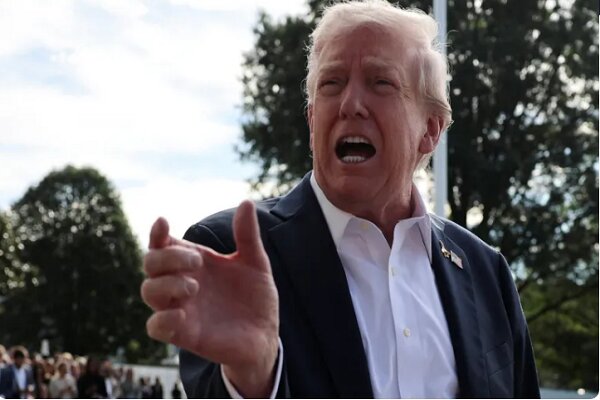Trump’s impasse against economic structures

TEHRAN- The “structure–actor” dichotomy is an invisible yet well-recognized paradigm in the international system. According to this principle, even in cases where the behavior of powerful actors changes, it does not eliminate or even significantly weaken the structures governing international relations.
This rule also applies to the United States’ trade war against other countries, particularly China.
Beijing, through reciprocal measures, anti-dumping policies, tariff manipulations, and adjustments to the value of the yuan, has not only neutralized Trump’s protectionist economic measures—rooted in unilateralism—but has also reinforced support for the multilateral economic framework envisioned by the World Trade Organization. In other words, Trump’s economic confrontation with China faces two fundamental challenges: first, the inclination of the current global trade structure toward preserving its rules and institutions; and second, China’s strong capacity for counteraction in the labyrinthine game of tariffs.
Recently, Bloomberg published a significant report on the widening U.S. trade deficit with China and other nations. According to Bloomberg, China’s export machine, despite Washington’s sanctions, has found new markets and is heading toward a historic trade surplus. Beijing is now on track to record a surplus of over $1.2 trillion—an unprecedented figure in global economic relations.
In effect, China has replaced its threat-focused perspective on Trump’s tariff war with an opportunity-focused approach, extracting maximum advantage from the “structural tendency of global trade to maintain its original form.” This represents China’s fastest export growth since 2022 and the COVID-19 pandemic. Today, more than half of the world’s countries consider China their top trading partner, making any countermeasure against it extremely costly.
Another key point concerns the behavior of actors in international relations. While Trump has challenged the global trade structure, the inclination of other actors to preserve it has become a major problem for the White House and the U.S. Treasury. Many American economic strategists accuse Trump of lacking the necessary understanding of the “structure–actor” relationship in the sphere of global trade.
Targeting all international actors—even America’s economic partners such as India and the European Union—in his tariff war demonstrates that the U.S. president not only fails to grasp structural constants in global trade but also acts in an overly idealistic and economically illogical manner in prioritizing the actors he confronts.
At present, Trump is caught in a dilemma: on one hand, he cannot retreat from his trade war against other countries; on the other, he is faced daily with data and statistics that undermine the outcomes of his economic confrontation with the international system. The forthcoming release of trade deficit figures between the U.S. and the European Union in their trade with China—expected in early 2026 (around four months from now)—may well deliver the final blow to this economic battle.
Mahdi Zolfaghari is an Associate Professor in Department of Asian Studies, Allameh Tabataba’i University
Leave a Comment